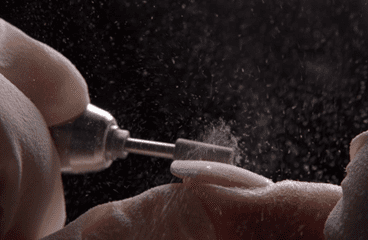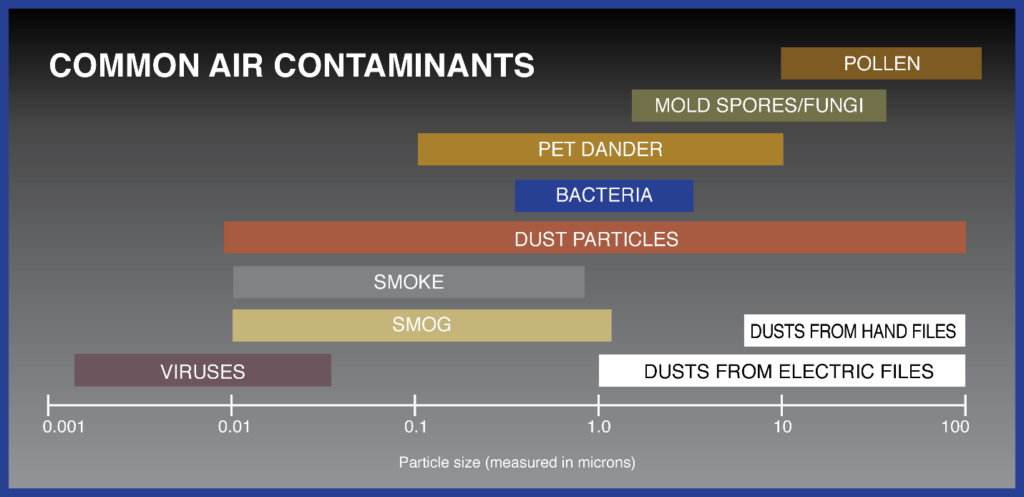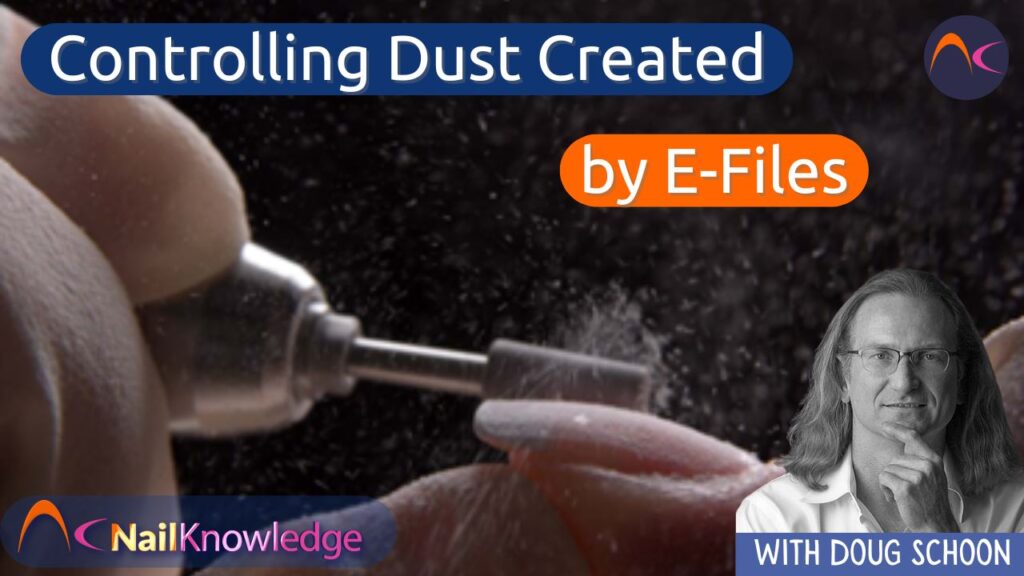Problems may occur when nail technicians ignore excessive inhalation of dust (or vapors). Filing can create a lot of dust that ends up in the breathing zone of the salon worker.
Disposable dust masks can be used to minimize inhalation of dust, as can source capture ventilation. Dust masks should never be used in place of proper ventilation. Even so, when properly used, the correct mask can be an important way to prevent inhalation of excessive amounts of dust particles. They are especially useful to those with pre-existing asthma, allergies, or other breathing related conditions.
Cómo elegir las mejores mascarillas contra el polvo para la seguridad en el salón de manicura
The best dust masks are specifically designed to block dust. These are thicker than most masks and better able to block most of the fine particles that attempt to penetrate the mask. For any dust mask to work well it must fit well. Better quality dust masks will fit and seal more securely and comfortably and do a better job overall. Dispose of these masks regularly and follow the manufacturer’s directions for use. Avoid using surgical/doctor-type masks since these will not provide enough protection and should not be used in the salon setting. Doctor-type masks may help prevent the spread of germs but are not suitable for salon work.
Reducir el polvo del salón con limas eléctricas Aceites para uñas
También recomiendo utilizar aceite para uñas de lima eléctrica al limar para reducir la cantidad de polvo en el aire. Estos aceites para uñas están especialmente diseñados para trabajar con limas eléctricas y es una forma muy eficaz de reducir significativamente la cantidad de polvo fino en el aire del salón. La imagen muestra la facilidad con que el polvo se propaga a la zona de respiración cuando no se utilizan aceites para limas eléctricas.

Image 19 A: A large volume of very small dusts particles are created by electric files.
Comparación del tamaño de las partículas del polvo de las uñas: limado manual frente a limado electrónico

Imagen 18: Tamaño de las partículas de varios contaminantes del aire en relación con el polvo creado por el limado manual y las limas eléctricas.
The chart indicates the typical particle size of nail dust when hand and e-filing are compared. Note that e-files create much more of the smaller size dust particles as shown by the range of the hand file and e-file bars on the chart. The larger particles created by hand filling, tend to clump together and quickly fall out of the air to cover the tabletop, and floor, as well as to collect in the hair or inside the collar. They make a mess, but at least they aren’t in the air, so they can’t be breathed.
Riesgos de las pequeñas partículas de polvo de los archivos electrónicos en los salones de manicura
Note that e-files create much more of the smallest dust particles, which are much lighter and can remain suspended in the salon air for hours. These extra-small dusts created by e-filing are a greater inhalation risk, so they are more important to control and avoid. These smaller particles are easier to inhale and get pulled deeper into the lungs. Of course, the lungs are good at handling dusts and getting rid of them. They have to be, we live in a dusty world and this chart shows that many even smaller practices are often inhaled, but that’s not a reason to ignore this issue.
Control del polvo visible e invisible de las uñas
Sea cual sea el método que utilices para limar, es importante mantener limpia la zona de trabajo y eliminar todo el polvo visible, pero ten en cuenta el polvo invisible. Los de menos de 10 micras no se ven fácilmente y flotan por el salón, de modo que todo el mundo puede respirarlos. Por suerte, estos polvos invisibles son fáciles de controlar:
- Buenas prácticas para controlar el polvo.
- Use of appropriate ventilation, e.g. “source capture” systems that remove dust from the source, as they form.
- Uso de una lima eléctrica aceite de uñas.
- Uso correcto de una mascarilla antipolvo adecuada.


